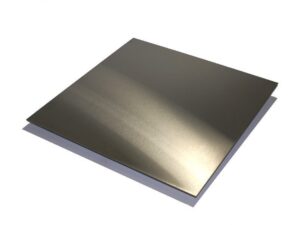Description
Hot Rolled Sheets: A Versatile Workhorse of Modern Industry
Hot rolled sheets are a fundamental building block of modern manufacturing, construction, and countless other industries. Their widespread use stems from their affordability, versatility, and inherent strength, making them a go-to material for a wide range of applications. Let’s delve into what makes hot rolled sheets so important and explore their diverse applications.
What are Hot Rolled Sheets?
Hot rolled sheets are manufactured through a process that involves rolling steel at high temperatures, typically above its recrystallization temperature (around 1700°F or 927°C for steel). This extreme heat makes the steel more malleable, allowing it to be easily formed into desired shapes and thicknesses. The red-hot steel is passed through a series of rollers, gradually reducing its thickness and increasing its length.
The hot rolling process often results in a less refined surface finish compared to cold rolled sheets. This “mill finish” can include a slightly rough texture, oxide scale (often referred to as mill scale), and slight imperfections. However, these characteristics often don’t detract from its functionality and can even be beneficial in certain applications.
Advantages of Hot Rolled Sheets:
- Cost-Effectiveness: Hot rolling is a more efficient process compared to cold rolling, requiring less energy and fewer processing steps. This translates to lower production costs, making hot rolled sheets a more budget-friendly option.
- Strength and Durability: While the surface finish might be less refined, hot rolled sheets boast excellent strength and durability. The high-temperature processing alters the steel’s microstructure, often resulting in good tensile strength and weldability.
- Formability: Despite their strength, hot rolled sheets are surprisingly formable. They can be easily bent, stamped, and shaped into a wide variety of components.
- Availability in Various Sizes and Thicknesses: Hot rolled sheets are readily available in a wide range of sizes, thicknesses, and grades, catering to diverse project requirements.
- Weldability: Hot rolled steel generally exhibits good weldability, allowing for easy joining of components into larger structures or assemblies.
Applications Across Industries:
The versatility of hot rolled sheets makes them indispensable across numerous sectors. Here are just a few examples:
- Construction: Used for structural components like beams, columns, and support structures, as well as roofing, cladding, and bridge construction.
- Automotive: Employed in chassis components, wheels, and various structural parts of vehicles.
- Manufacturing: Utilized for creating machinery housings, agricultural equipment, industrial tanks, and pressure vessels.
- Transportation: Found in railway cars, shipping containers, and other modes of transport.
- Agriculture: Implemented in agricultural equipment, storage silos, and livestock enclosures.
- Energy: Applied in pipelines, storage tanks for oil and gas, and wind turbine components.
Knowing When to Choose Hot Rolled Steel:
Choosing the right material for your project is crucial. Hot rolled sheets are ideal when:
- Strength and cost are primary concerns: When budget is a major factor and a high level of surface finish isn’t critical, hot rolled sheets offer a cost-effective solution.
- Welding is required: The good weldability of hot rolled steel makes it suitable for fabricated structures.
- Forming is necessary: Their formability allows for creating complex shapes.
- High precision is not a top priority: The mill finish and slight dimensional variations are acceptable for the application.
In Conclusion:
Hot rolled sheets are the unsung heroes of many industries, providing a robust and cost-effective solution for a multitude of applications. Their strength, formability, and affordability make them a vital material for building infrastructure, manufacturing products, and supporting various sectors of the global economy. Understanding the advantages and limitations of hot rolled sheets allows engineers and designers to make informed decisions, ensuring the right material is chosen for the job and maximizing efficiency and performance.











Reviews
There are no reviews yet.